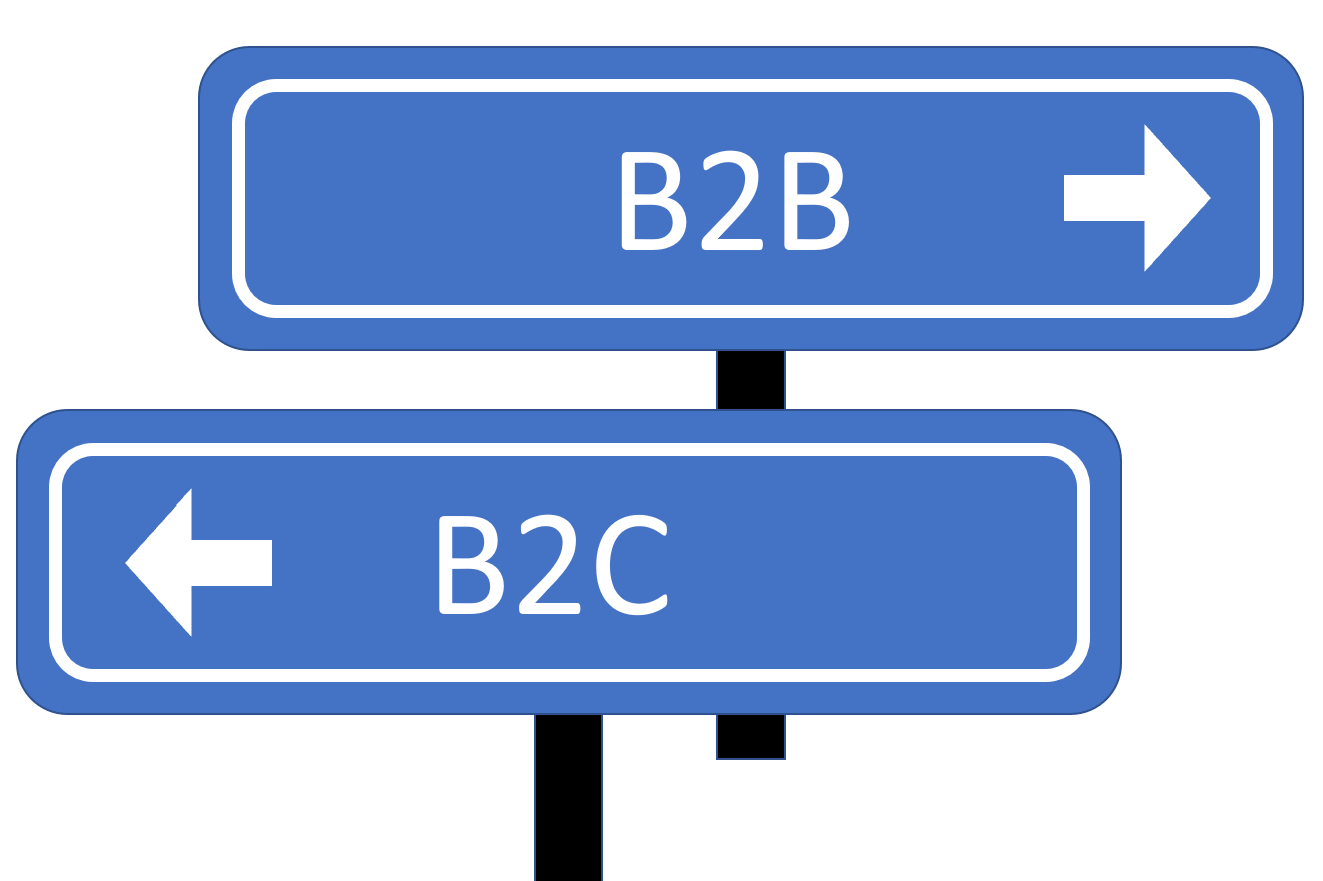To B2B or B2C, that’s the question.

Article de Ken Van Eesbeek, Head of Professional Services.
A few years ago, back when our Fintech company consisted of 2 floors in a residential house close to Liège University, back in Belgium, we managed to get a meeting with a large non-European bank.
Our objective was not particularly different from any other of our sales meetings: try to convince how algorithms and digital would determine the future of wealth- and asset management (imagine the cheek)!
The CEO of the bank, unhindered by jetlag or prejudice, took his time to hear our arguments and to look at our use cases. Somewhere halfway during our slides, he threw out a very simple question: “If your algorithms and user interfaces are so great, why don’t you use them yourself?”.
We were used to the question. However, the fact that we invested some private pocket money in a portfolio together with some colleagues at the office, turned out not to be what he meant by his question.
“No, I mean why don’t you start an online business yourselves?”.
“Well, it’s not our core business! We do B2B.” We responded. And “we don’t want to compete with our own customers”. The arguments, however, didn’t hide the fact that we were challenged on our business relevance. If you are an expert in a domain, in this case technology for investment advisory services, “what stops you from going a step further, and putting it into action yourself? Why don’t you practice what you preach? ” The answer? A combination of capital and guts, probably.
Skepticism
As we carried on our entrepreneurial journey, skepticism was expressed by some financial institutions in our core markets.
- Regulation: “your profiling process will never survive an audit”. “It cannot be GDPR compliant”. “And AML?”
- Commercial experience: “do you have any idea how difficult it is to convert a prospect via a website or an app? Do you realize what it takes to deal with consumers?”
- Technology: UX design, responsive screens, mobile applications. We did not have that. Yet.
- Operations: everybody can build apps. Running one requires a completely different skill set. Can you cover the full execution cycle of transactions?
Several academics and honorable experts in business strategy explained how wrong we were to go B2C next to our core B2B business model, with such a different business model and an obvious lack of retail expertise on our side. We couldn’t be more at odds with the 101 business strategy textbooks.
Put that in your pipe and smoke it
Twelve months, a capital increase and a regulatory approval later and we launched Birdee Money Experts: our very own robo-advisor.
Today, Birdee serves more than 20,000 investors in Belgium, France and Luxembourg and is fully operated by us.
And there is more to it than that. Birdee obviously leverages the technology we have built over several years in our B2B activities but the closeness with end-clients keeps fueling innovation and vision in the solutions we develop for financial institutions. Although Birdee and Gambit operate as distinct companies in two separate locations, the proximity of the product and development teams creates an emulation that benefits both companies beyond their traditional scope of intervention.
And the majority of our corporate clients love it!
More than one advantage
From a notoriety and marketing perspective, we do not play in the same league. But, with Birdee:
- We don’t need to build a POC to prove our solutions work. Our prospects can simply download the app and experiment firsthand.
- We get direct customer feedback, instead of hearing about it via our institutional partners. We can correct or add a service that consumers want in a couple of months rather than a couple of years.
- We share skills one can only acquire one is in the line of fire.
- We are part of our clients’ community. We have to comply with the same regulations, we deal with the same market conditions, we serve (with joy) the same consumers.
- We are prepared for partnerships with other fintechs in the industry to quickly expand our solutions and onboard technology innovation. Most financial institutions expect more than just software these days.
B2B first, B2C second
To make things even better, we are B2B first, and B2C second. It means that we have a technological advantage compared with many fintechs that had chosen to ride the opposite journey. We built flexibility and customisation at the heart of our technology architecture. It was more cash voracious than the hard-coding shortcuts you opt for when you start a B2C project. But today it allows us to deal more easily with the specific requirements of each of our clients.
We hope one day to meet the bank’s CEO on the other side of the pond. For regulatory reasons, we couldn’t give him what he was looking for. But he gave us a lot: an encouragement to break the then sacrosanct rule that, if you want to survive as a start-up, you need to choose and grow either as B2B or as B2C.
.svg)